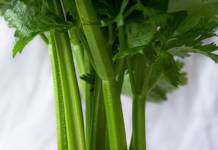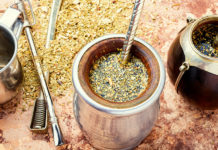by Dr. Craig A. Maxwell
Have you ever opened your mouth at the wrong moment only to find, to your horror, that you swallowed a bug?
Or found a human hair in your salad and struggled not to lose your lunch as you brought it back for a refund?
Eating something disgusting happens a lot more often than you might think.
Here is my list of the top 10 most disgusting ingredients in food:
1. Pus
If you drink pasteurized milk from confined animal feeding operations (CAFOs), you’re likely getting a little pus in every glass. Factory-farmed dairy cows are mechanically milked and the procedure is often rougher than what their bodies can endure. Since they are also packed in together so tightly, it routinely leads to the development of infection, which also encourages excess production of pus.
2. Crushed Beetles
The red dye in maraschino cherries, tomato products, yogurt, candy, and snack cakes is often produced by grinding up cochineal beetles. It may do no harm to your health, but it’s still pretty gross to think about.
3. Human Hair
If you’ve ever eaten homemade bread, you may have noticed it feels more dense than what you can purchase in the bread aisle of your favorite grocery store. The squishy, pliable consistency of the latter type of bread is brought to you courtesy of L-Cysteine, an amino acid sometimes made from either human hair or duck feathers.
4. Maggots
Do you use canned mushrooms? The Food and Drug Administration is reported to allow a total of 19 maggots in each can before requiring it be pulled from the shelves. That doesn’t necessarily mean you’ll find them wriggling around in your food anytime soon, but it is allowed. To be on the safe side, eat fresh mushrooms instead.
5. Beaver Anal Secretions
Anything that boasts “natural vanilla flavor” may be produced through the use of liquids extracted from the castor sac glands of both the male and female beaver. (These glands are located near the anus).
6. Bug Droppings
Have you ever noticed how shiny certain candies can be? That would be due to the bug droppings. Food-grade shellac is produced by scraping the fecal matter off certain trees in Thailand. To make matters even worse, only the female droppings are used and, oftentimes, the kerria lacca beetle drops a fraction of her egg larvae right into the mix.
7. Carbonized Animal Bone
If you eat a lot of table sugar, you’re also swallowing some carbonized animal bone, otherwise known as bone char. Animal bones are heated to 900+°F, where the smoked is trapped and formed into a liquid substance. That liquid is then added to sugar to give it its bright white color.
8. Animal Connective Tissue
Gelatin is made from boiled-down animal connective tissue called collagen. If this disgusts you, it’s not just Jell-O you have to avoid. Gelatin is found in everything from gummy candy to processed cheese.
9. Human Fecal Matter
When you eat out at restaurants, avoid the lemons. Unlike other food products prepared in the kitchen of your favorite restaurant, lemons don’t require washing because nobody eats the skin. This means if a kitchen worker neglects to wash his or her hands after using the bathroom, anything left behind will be directly transferred to your glass.
You might want to skip that fountain drink too. A Hollins University study revealed that up to 48% of restaurant soda fountains were contaminated with fecal matter!
10. Flame Retardant
Brominated Vegetable Oil (BVO) was once used to prevent plastics from catching fire, which is why it’s still patented as a flame retardant. Despite this fact, it can still be found lurking in soda, fruit juices, and sports drinks. BVO has been linked to nerve disorders, cognitive impairment, skin lesions, and even cancer. Sodium bromate, bromine, and bromate are common named for this synthetic flavoring agent.
The best way to avoid most of the most disturbing ingredients in food is to avoid highly-processed junk food and eat as much organic whole food as possible. An ill-timed picnic yawn may still have you swallowing a bug at some point in your lifetime, but hey, it could be worse!
Read More:








